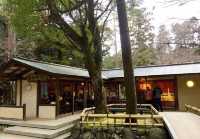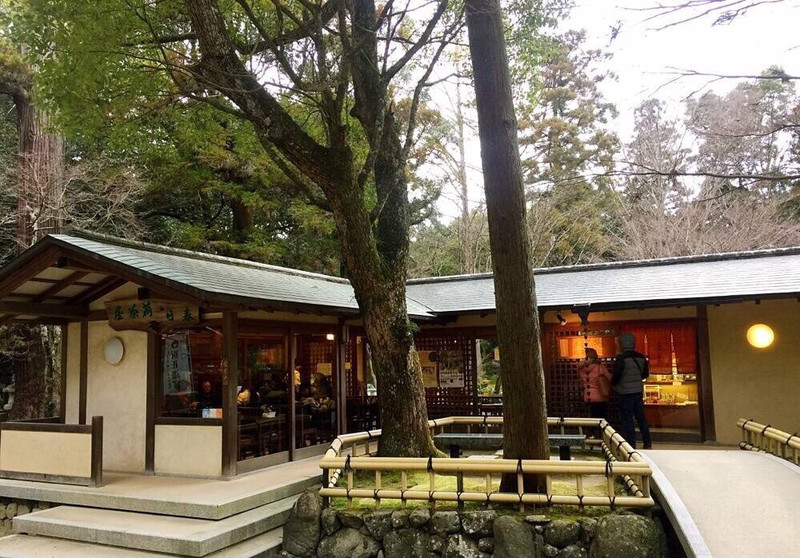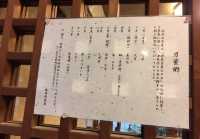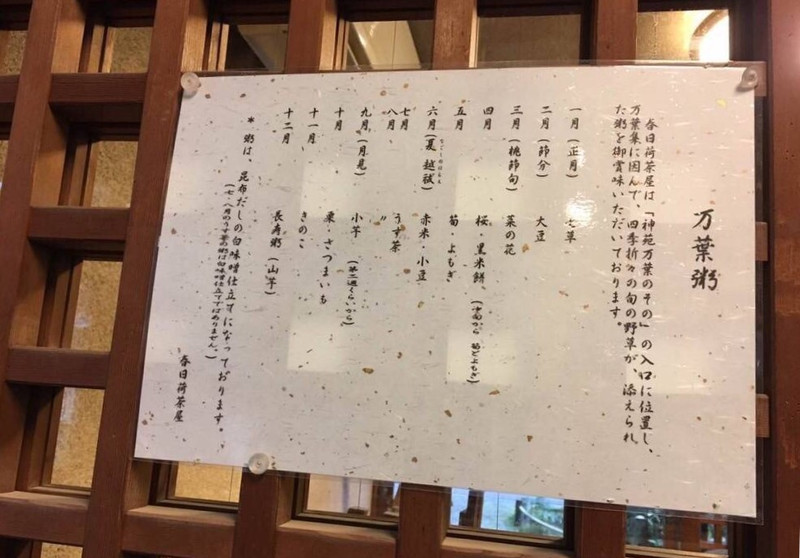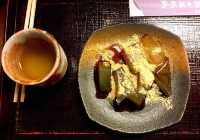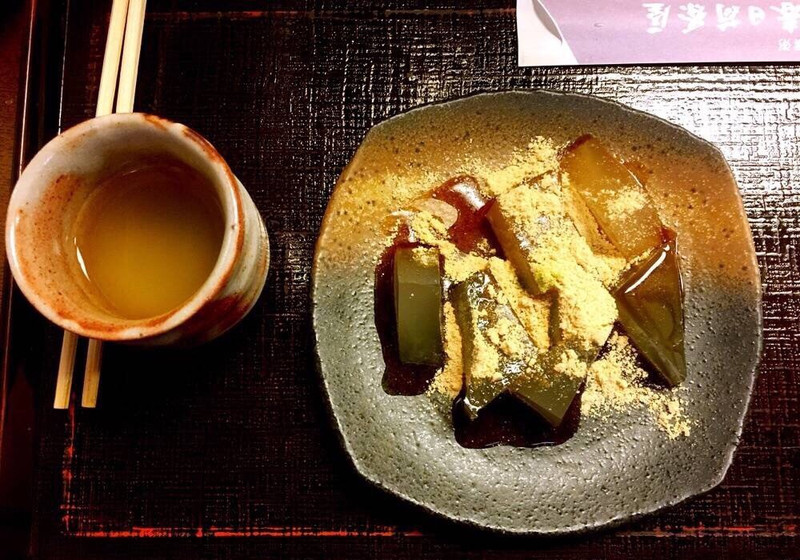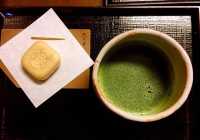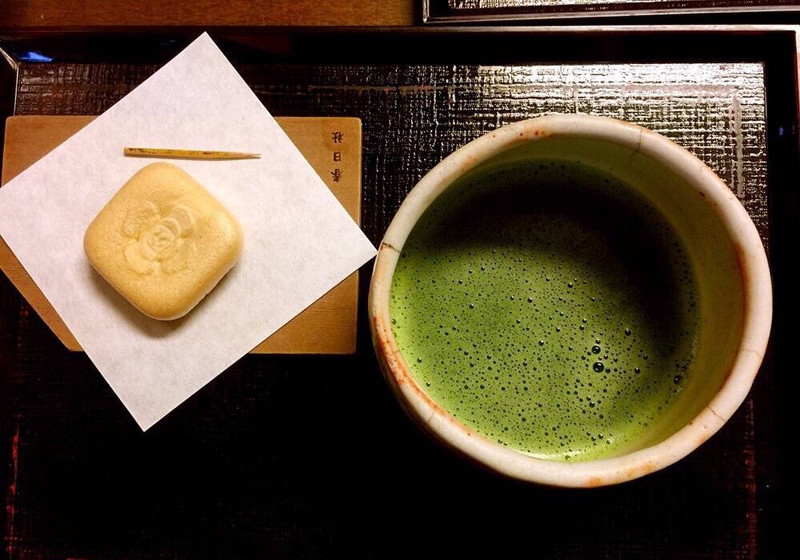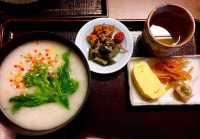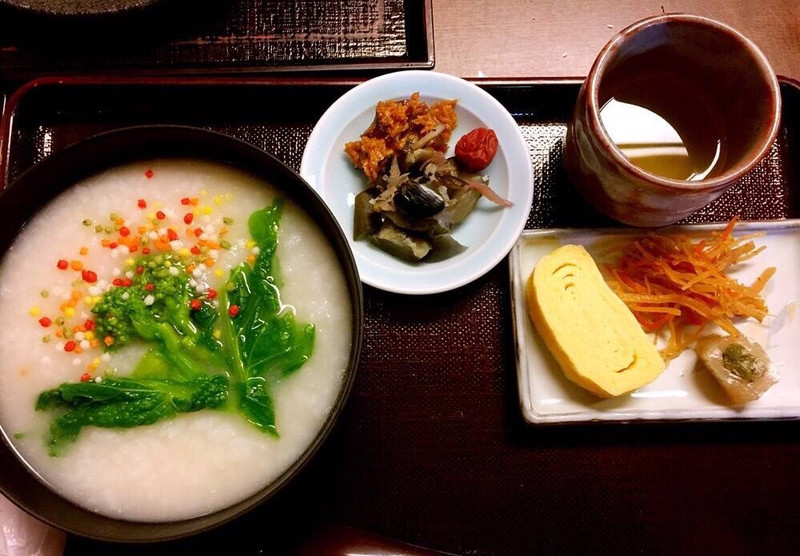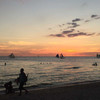Kasuga Teahouse near Kasuga Taisha Shrine. I recommend the Manyo porridge, which is delicious with pickled vegetables. It looks good, but I don't like the taste of spices; the persimmon leaf sushi, the fish on the rice ball is too fishy; or the refreshing vegetarian noodles, three flavors, the taste is not bad
Kasuga Ninai Jyaya Review
4.6 /5192 Reviews
Recommended Attractions at Popular Destinations
Attraction near Bangkok | Attraction near Manila | Attraction near Tokyo | Attraction near Taipei | Attraction near Hong Kong | Attraction near Seoul | Attraction near Kuala Lumpur | Attraction near Los Angeles | Attraction near Shanghai | Attraction near New York | Attraction near Shenzhen | Attraction near Osaka | Attraction near Singapore | Attraction near London | Attraction near Guangzhou | Attraction near San Francisco | Attraction near Beijing | Attraction near Macau | Attraction near Bali | Attraction near Jakarta | Attraction near Paris | Attraction near Ho Chi Minh City | Attraction near Istanbul | Attraction near Phuket | Attraction near Chicago | Attraction near Seattle | Attraction near Toronto | Attraction near Orlando | Attraction near Cebu | Attraction near Chiang Mai
Popular Travelogues
Bangkok Travelogue | Tokyo Travelogue | Hong Kong Travelogue | Seoul Travelogue | Kuala Lumpur Travelogue | Los Angeles Travelogue | Shanghai Travelogue | New York Travelogue | Shenzhen Travelogue | Osaka Travelogue | Singapore Travelogue | London Travelogue | Guangzhou Travelogue | Beijing Travelogue | Macau Travelogue | Paris Travelogue | Phuket Travelogue | Chicago Travelogue | Orlando Travelogue
Popular Ranked Lists
Popular Luxury Hotels Near Prienai District Municipality | Popular Must-Visit Restaurants in Bali | Popular Luxury Hotels in Sorrento | Popular Must-Visit Restaurants in Auckland | Popular Must-Visit Restaurants in Frankfurt | Popular Luxury Hotels Near Rutherford | Popular Must-Visit Restaurants in Munich | Popular Must-Visit Restaurants in Ho Chi Minh City | Popular Premium Hotels in Oakland | Popular Must-Visit Restaurants in Shanghai | Popular Luxury Hotels in Carlsbad | Popular Must-Visit Restaurants in Chongqing | Popular Luxury Hotels Near Evros | Top 6 Best Things to Do in Jincheng | Popular Luxury Hotels Near Alexandroupolis | Popular Must-Visit Restaurants in Paris | Popular Must-Visit Restaurants in Los Angeles | Popular Premium Hotels Near Reynosa | Popular Best Things to Do in Longyou | Popular Luxury Hotels in Tov | Popular Best Things to Do in Jingmen | Popular Luxury Hotels Near Anatolikos Olimpos | Top 6 Best Things to Do in Hezhou | Top 3 Best Things to Do in Chizhou | Popular Must-Visit Restaurants in Vienna | Top 8 Best Things to Do in Chongzuo | Popular Must-Visit Restaurants in Rome | Popular Best Things to Do in Jiaozuo | Popular Best Things to Do in Liancheng | Popular Must-Visit Restaurants in Seoul
Payment Methods
Our Partners
Copyright © 2025 Trip.com Travel Singapore Pte. Ltd. All rights reserved
Site Operator: Trip.com Travel Singapore Pte. Ltd.
Site Operator: Trip.com Travel Singapore Pte. Ltd.
